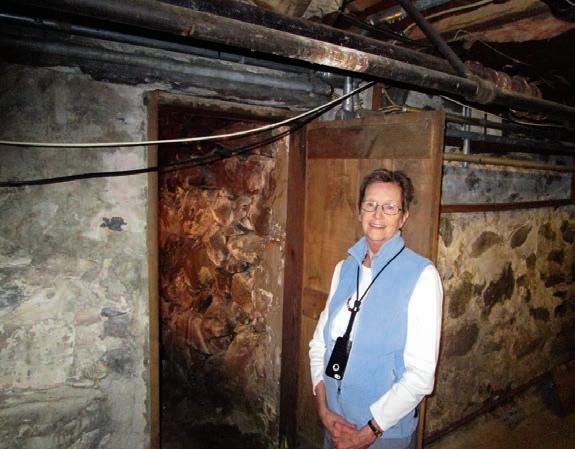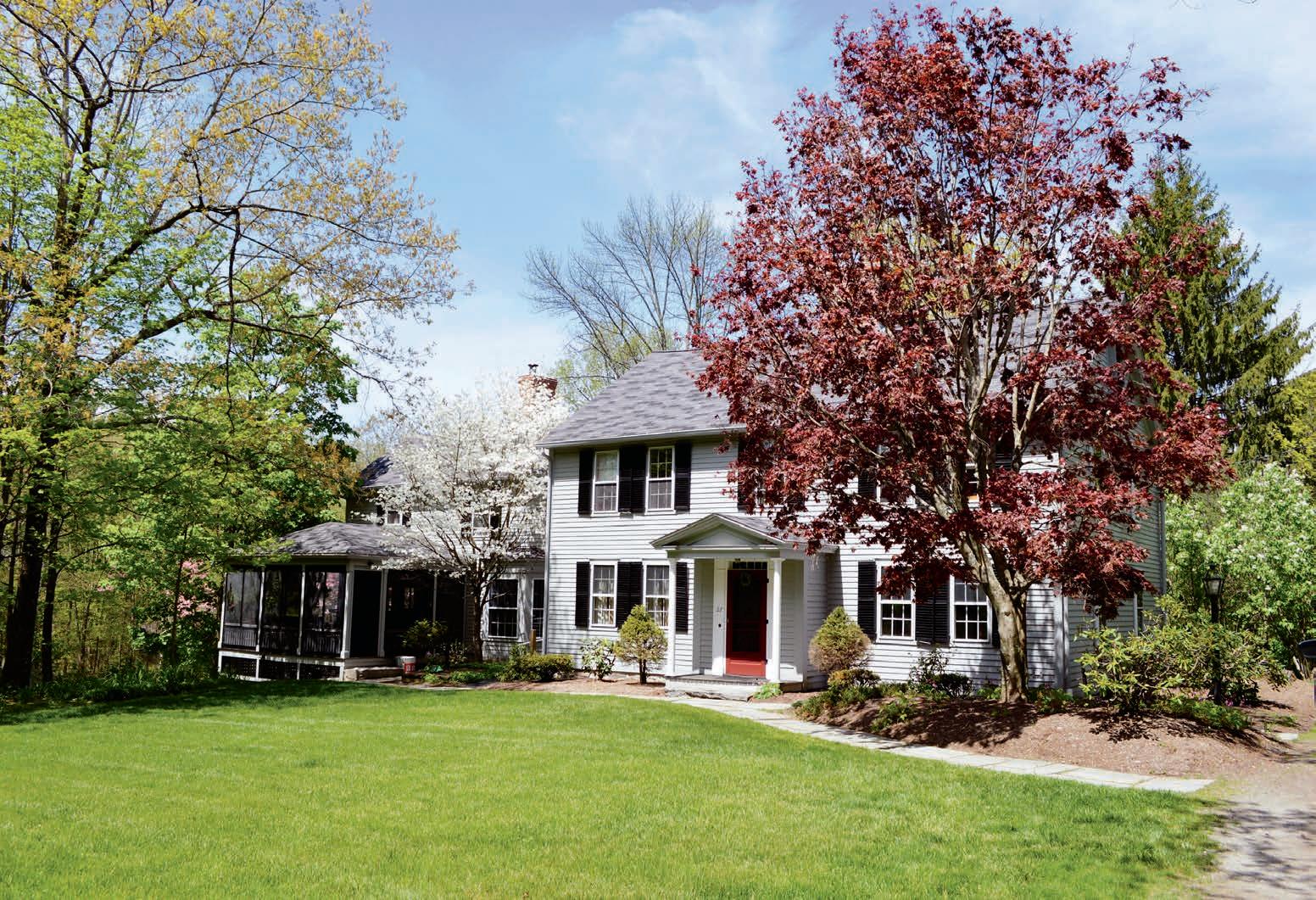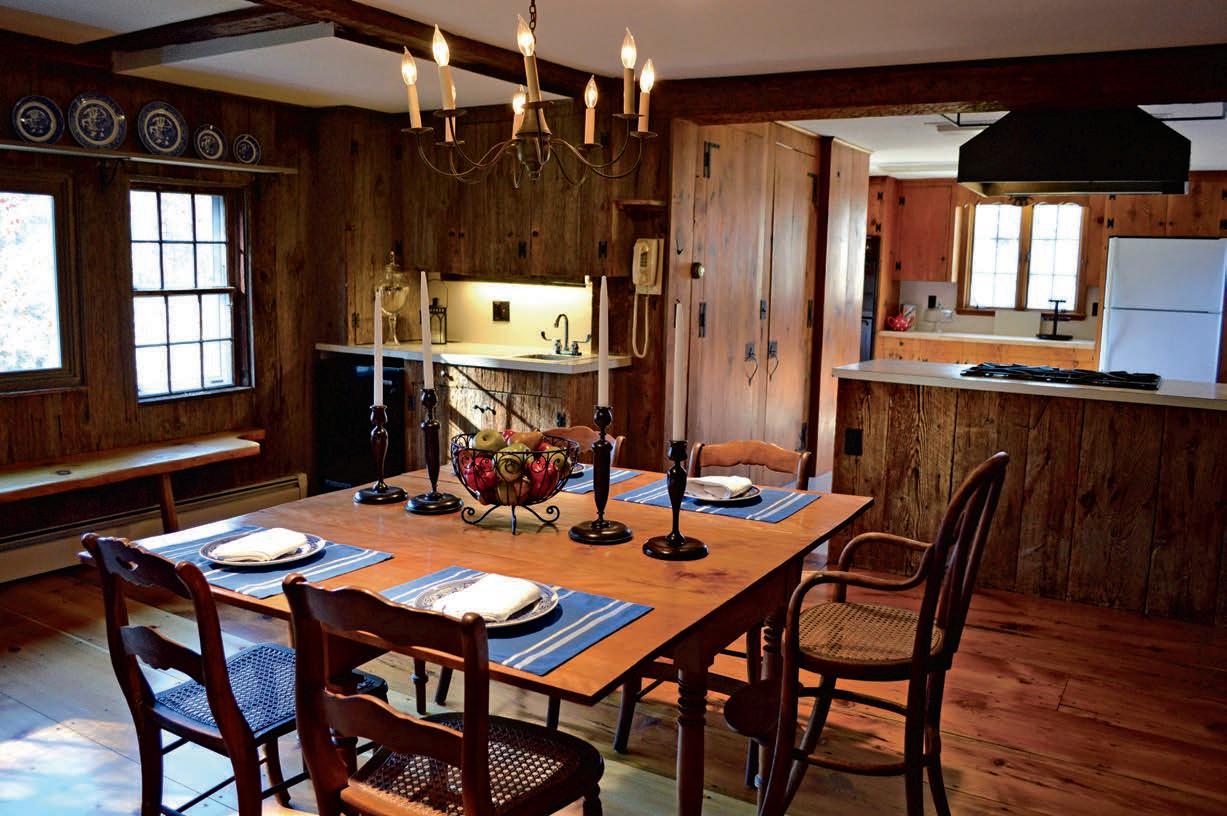
2 minute read
The 18th-Century House That Children Love
here are the railroad tracks?” is a question Jody Newman often hears during the tours she gives local third-graders of her classic 1760 center-chimney colonial in Stow, Massachusetts. (She explains to them, you see, that the home supposedly was part of the Underground Railroad.) Jody told us this as we were relaxing with her in a room next to a huge brick fireplace, one of seven in the house, enjoying her just-out-of-theoven cranberry bread muffins, the best we’ve ever eaten.
Jody and her late husband, Edward, who passed away eight years ago, purchased the Gates/ Whitney Homestead, as it’s known, in 1976 (“I knew this was ‘it’ the minute I walked in the door!”). They did a great deal of renovation over the years, raised their four children here—a boy and three girls, now adults—and conducted tours for the town’s youngsters. The part of the tour the children particularly liked, she said, was the hidden area in the cellar that’s thought to have served as part of the Underground Railroad, the famous route along which escaped slaves were temporarily hidden on their way to freedom in Canada.
Jody took us down there as part of our subsequent tour: It’s a dark, spooky, closed-in space, once a huge pit that’s recently been filled in, with gigantic stones overhead. No wonder the children are intrigued—even without the railroad tracks!
“I could tell your house is old,” one little boy wrote Jody after the tour, “because there are lots of cobwebs and cracks.” “You sure have a lot of fireplaces,” wrote another (many children notice that the chimney flues are plenty big enough to accommodate Santa Claus on Christmas Eve).

The Gates/Whitney Homestead sits on three-plus acres and includes a pond that’s ideal for swimming and skating.

BELOW : Among the home’s historic details is original wide-board pine flooring.

Jody said that after her husband passed away, she tried for a time to maintain this lovely but large (3,900 square feet) house by herself; when that got to be a bit much, she had a smaller, one-story home built on her land next door. She moved into the second house late last year, and now she has put her beloved colonial on the market, asking $699,000, including three-plus acres and a two-anda-half-car detached garage in front of the pond where her children and their friends enjoyed swimming in the summer and skating in the winter.
Besides inspecting the Underground Railroad area, we admired the beautiful pine flooring throughout the house; the original raised paneling in many of the rooms, some of it obviously hand-hewn; and the colorful, historically accurate stenciling in several of the six bedrooms. There are four and a half bathrooms, and a spacious screened-in porch overlooks the pond. We particularly loved the country kitchen and eating area, also overlooking the pond and open lawn. We must mention, too, the “mourn- feel with its numerous apple orchards and farms, a pretty town beach on a lake, an active historical society, and lots of conservation land. Plus it has a shopping area, five golf courses (four public, one private), and an easy commute to Boston via train.

“And you gotta have a meal at the restaurant out at the airport,” at Nancy’s Airfield Café, Jody told us. “One of our daughters even got married there.” ing and borning room” on the cooler, north side of the house, where many were born and no doubt many died and awaited burial.
As to Stow (population about 7,000), we’d say that it’s one of New England’s secret gems. Only 21 miles west of Boston, it retains its country
At one point in our tour, we noticed stairs to the second floor so narrow and steep they’re no longer much used. But Jody told us the children invariably commented on this, having never seen such a cramped set of stairs. “And it squeaks,” one little boy said recently after trying it out.
Who says history can’t be fun?








